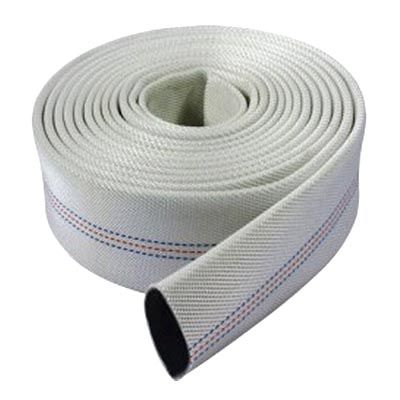Fire hose features and maintenance
Fire hoses are hoses used to transport high-pressure water or flame-retardant liquids such as foam. The traditional fire hose is lined with rubber and wrapped in linen weave. Advanced fire hoses are made of polymeric materials such as polyurethane. There is a metal sleeve in the middle of the fire hose, which can be connected to another water belt to extend the interval or connect the nozzle to increase the liquid discharge pressure.
The characteristics of the fire hose are as follows:
1. The planned mission pressure and pressure resistance value of the fire hose should not be lower than the rules.
2. The fabric layer of the fire hose should be woven evenly and the appearance should be neat; no double jump, double warp, jump and scratch.
3. The length and size of the fire hose should be in accordance with the rules.
4. The thickness of the fire hose lining (or cover layer) should be average and the appearance should be smooth, free of wrinkles or other defects.
5. The nominal size of the inner diameter of the fire hose and the public service shall comply with the rules.
Maintenance and maintenance of fire hoses:
1. Management, fire hoses must be managed by a special person to prevent unintentional damage. All water hoses should be classified according to quality and numbered to understand the use of water hoses.
2. Storage, fire hoses can not be placed in outdoor sun and rain for a long time, can not be placed near the heat source, prevent aging, avoid corrosive and sticky materials, storage location, should have appropriate temperature and good ventilation, water hose should The single layer is rolled up and placed vertically on the water belt rack or reel for several times and exchanged several times a year. The water belt of the vehicle should be avoided to rub against each other and exchange folds if necessary.
3. Aspects of use. When laying, avoid sudden tortuous and torsion. After filling with water, avoid dragging on the ground to avoid contact with corrosive chemicals such as oil, acid and alkali. In areas where there may be flame or strong radiant heat, cotton or hemp water should be used. Belts should be hooked with water when climbing the water belt; when passing through the railway, they should pass under the rails. When passing the road, the water bridge should be placed on the road; prevent the water belt from coming into contact with the hard objects with angular edges. Throwing wood, steel and other items onto the water belt; the water belt should be cleaned after use; in cold areas, the water belt should be laid on the outside of the building.
4. Patching aspects. If a vulnerability is discovered during use, it should be wrapped in a cloth in time to prevent the small hole from expanding, and to mark it, and repair it in time. Usually check frequently, find damage, and repair in time.

